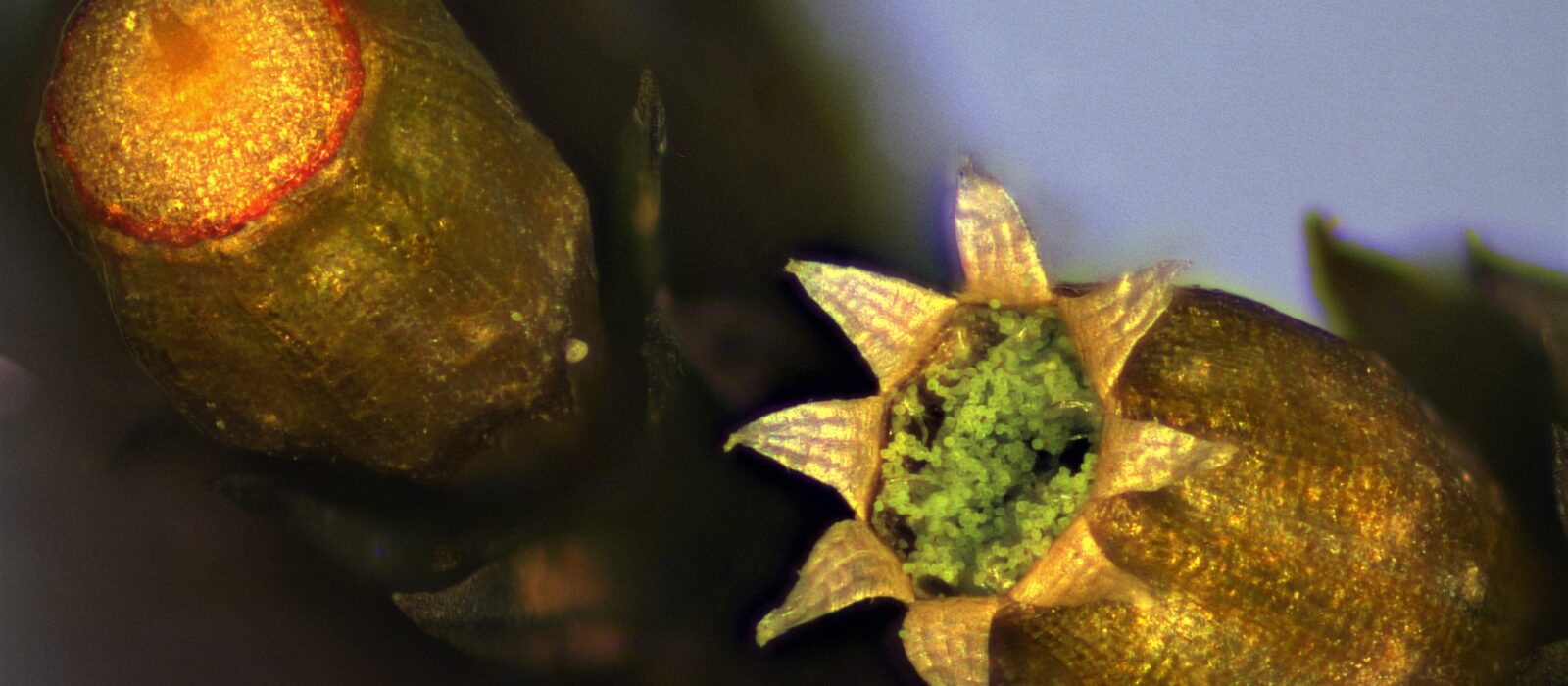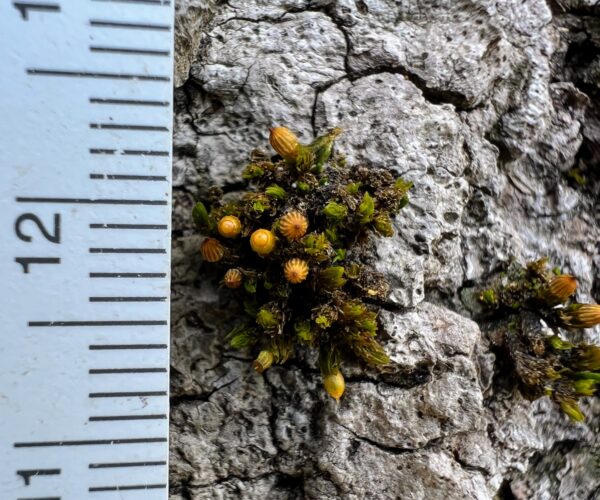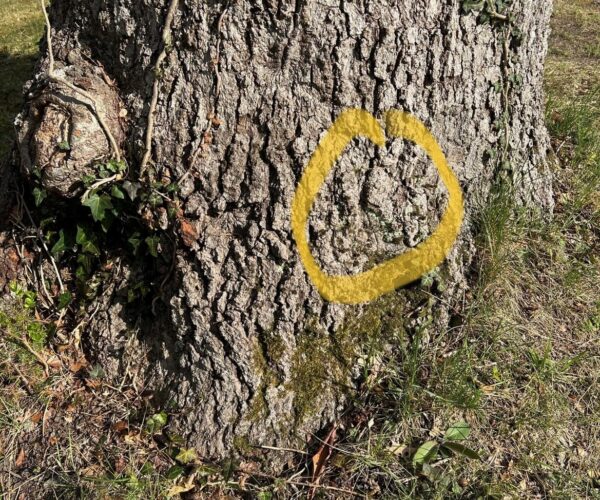A Vineyard Moss Releases Its Spores.
In our study of mosses on Martha’s Vineyard, we have found four species in the genus Orthotrichum so far, some on bark and some on stone. Two of the Orthotrichum species were not previously known to grow on the Vineyard. All four have in common a distinctive, parasol-like hood, called the “calyptra,” that protects the developing spores. Orthotrichum stellatum is the most common of the four species. If you see a moss with a parasol-like calyptra on tree bark on Martha’s Vineyard, chances are it’s Orthotrichum stellatum.
Roll your cursor over the images to see more information.
We’ve collected small samples of this and many other mosses for The Polly Hill Arboretum herbarium and posted photos to iNaturalist for inclusion in the Martha’s Vineyard Atlas of Life project. We also took the accompanying series of photographs showing O. stellatum in a typical setting and detailing the process of the moss getting ready to release its spores.
Orthotrichum stellatum, a moss native to Martha’s Vineyard, releases its spores by first shedding the parasol-like hood (calyptra) that protects its capsule. The capsule on the right has shed its calyptra.
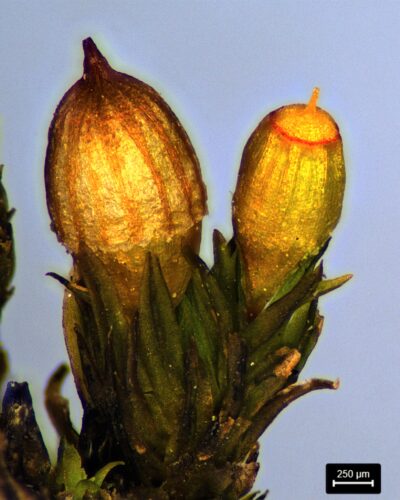
The next step is for the cap (operculum) to separate. This photo shows a gap developing between the operculum and capsule, revealing the green spores within.
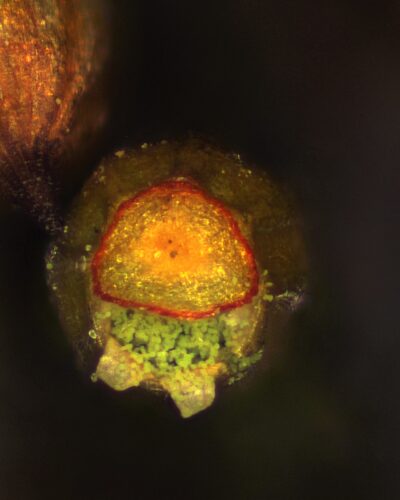
Here you can see a fully open capsule ready to entrust its spores to the wind. Spores are tiny enough to spread over great distances on the wind, helping mosses colonize new locations.
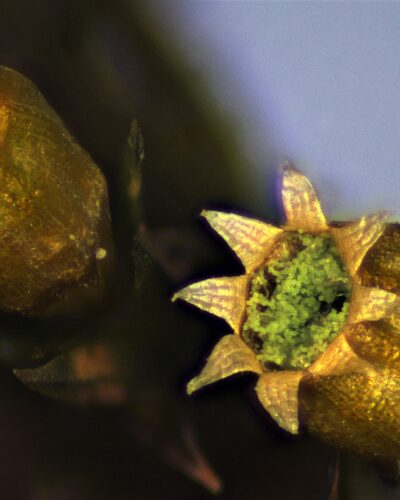
We found this moss while accompanying Rich Couse on a Natural Neighbors visit to a property in Vineyard Haven in April. Natural Neighbors is a Biodiversity Works program that offers homeowners guidance in making their land more welcoming to Martha’s Vineyard’s wild fauna and flora. The homeowners were already off to a good start with a Vineyard Conservation Society “Vineyard Lawn” sign displayed prominently on their front lawn, which had lots of pollinator-friendly plants coming into flower.
About the authors:
A retired medical doctor, Greg Palermo has been a Polly Hill Arboretum Research Associate since 2014 and is a member of the Martha’s Vineyard Floristic Study Group, a team of Island naturalists contributing to an updated Flora of Martha’s Vineyard.
Margaret Curtin is a research associate of the Polly Hill Arboretum. She and her partner, Greg Palermo, are working to document all the species of vascular plants and bryophytes that grow wild on MV. Margaret also serves on the BiodiversityWorks Board of Directors.
